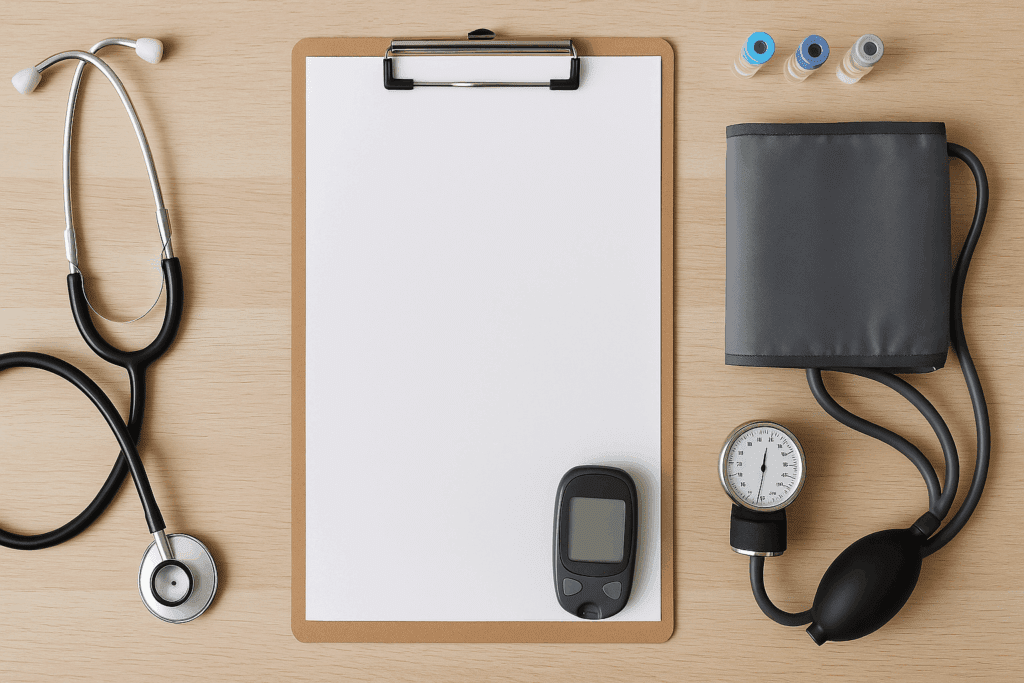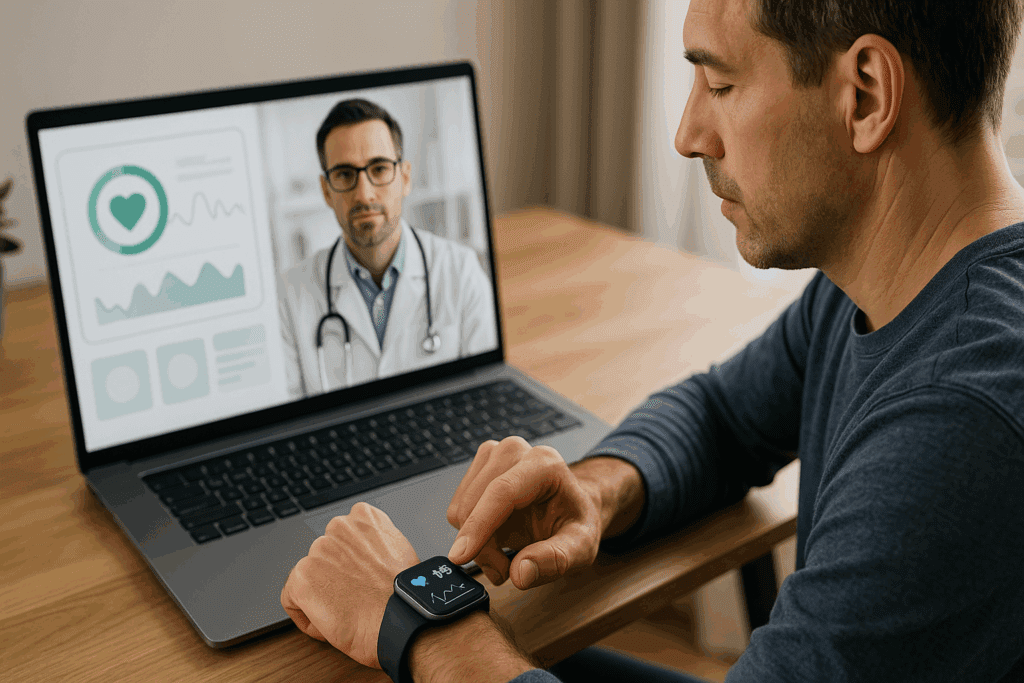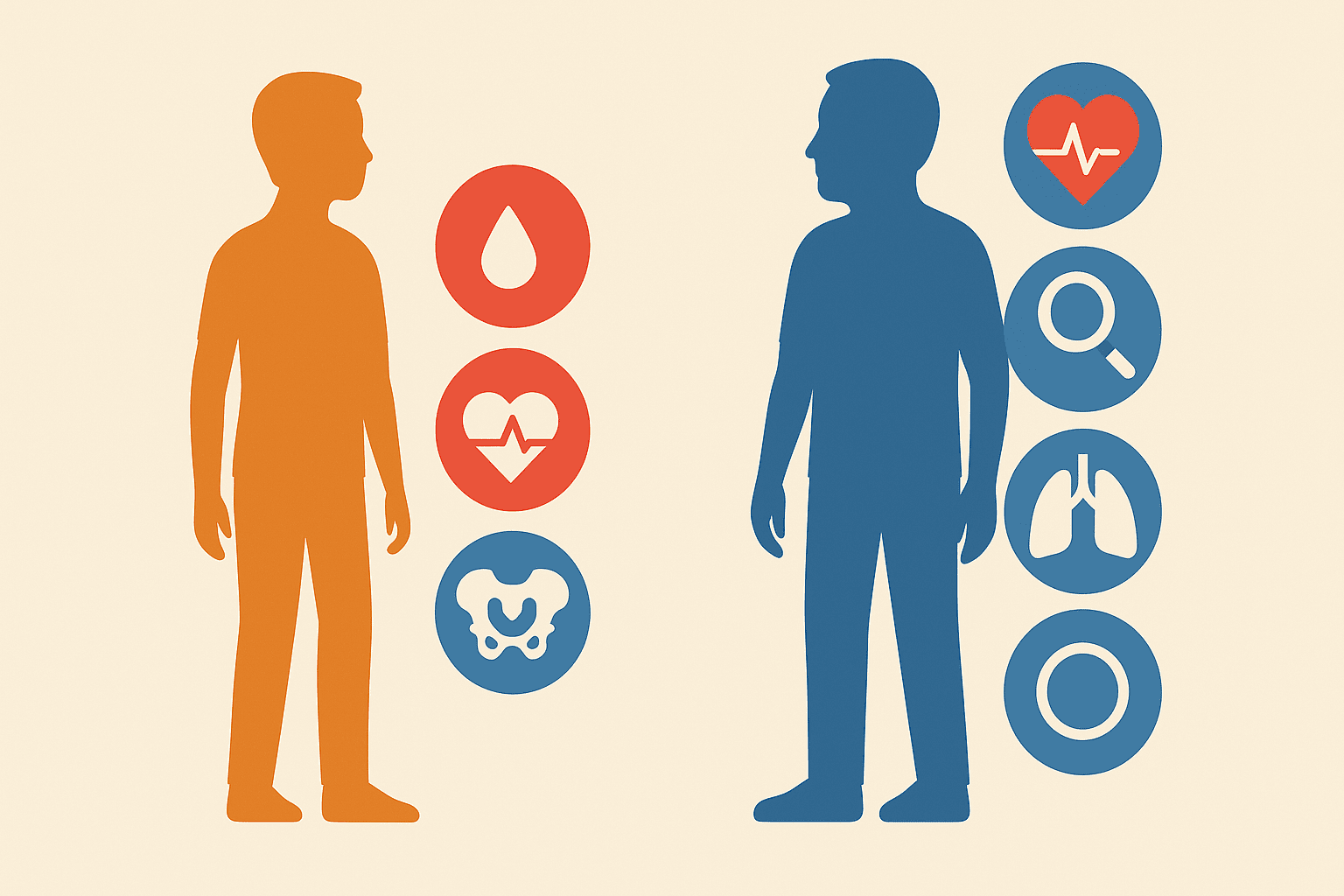Understanding your health needs as you transition into your 40s is a pivotal step toward maintaining wellness and preventing chronic disease. One of the most frequently asked questions by adults entering this decade of life is how often should you get a physical in your 40s. This seemingly simple query carries significant implications for long-term well-being, especially when considering that early detection through regular screenings often makes the difference between timely intervention and life-threatening outcomes. In this comprehensive guide, we explore not only how frequently you should see your doctor but also the broader context of preventive care and holistic wellness tailored to the needs of individuals in their 40s.
You may also like: The Essential Guide to the Different Types of Screening Tests for Early Detection and Lasting Wellness

The Importance of Preventive Care in Your 40s
Preventive care takes on heightened importance in your 40s, a life stage characterized by subtle yet consequential physiological changes. This is the decade where metabolic rates begin to decline more noticeably, hormonal shifts become apparent, and hereditary risks such as heart disease, diabetes, and cancer may start manifesting in observable ways. While the symptoms might not be overt, underlying changes in blood pressure, cholesterol levels, and blood glucose often signal early warning signs of chronic illness.
Many individuals in this age group lead demanding lifestyles, balancing careers, families, and financial responsibilities. In the midst of these pressures, it is easy to ignore subtle signs that something may be amiss. Regular physical exams serve as the foundation of preventive care by allowing healthcare providers to monitor baseline metrics and identify any deviations early. Such interventions, when made timely, can help avert major health crises and preserve quality of life for decades to come.
Why Annual Checkups Still Matter
Although there is ongoing debate in medical literature about whether all adults need yearly physicals, experts agree that by age 40, a shift toward more consistent medical oversight is prudent. Annual physical exams function as a comprehensive health audit, assessing not only current status but also long-term risks based on lifestyle factors, family history, and biometric trends. These visits offer a unique opportunity to discuss health goals, vaccinations, mental health concerns, and necessary lifestyle adjustments.
An annual physical often includes key assessments such as blood pressure monitoring, cholesterol panels, complete blood counts, and glucose tests. For women, this may also include mammograms and pelvic exams, while men may begin prostate screenings. More importantly, these annual checkups establish a history of medical data, which can provide invaluable insights when evaluating future symptoms or medical emergencies.

How Often Should You Get a Physical in Your 40s? A Personalized Approach
The answer to how often should you get a physical in your 40s is not universally prescriptive. While the general guideline recommends an annual checkup, this can vary depending on individual risk factors. For instance, individuals with pre-existing conditions such as hypertension, type 2 diabetes, or a family history of cardiovascular disease may benefit from more frequent monitoring. Conversely, someone in excellent health with no family history of chronic illness might discuss with their physician whether biennial visits are appropriate.
Personalization is key. Your healthcare provider may tailor your visit frequency based on lifestyle habits, such as smoking, diet, and exercise, as well as psychological stress levels and occupational risks. What remains non-negotiable is the importance of maintaining a proactive rather than reactive approach to health. Waiting for symptoms to emerge often means conditions are already well-advanced. Prevention, by contrast, empowers individuals to make informed choices and take early action.
Building an Annual Physical Exam Checklist by Age
One effective way to ensure comprehensive preventive care is to follow an annual physical exam checklist by age. In your 40s, this checklist expands beyond basic screenings to include more age-specific assessments. These may include thyroid function tests, skin checks for melanoma, eye exams for glaucoma, and hearing evaluations. For women, it becomes increasingly important to track bone density as hormonal changes begin affecting bone health. Men may also begin colon cancer screenings if family history indicates elevated risk.
An age-appropriate checklist also includes mental health evaluations, particularly for signs of anxiety or depression, which can be exacerbated by the pressures of midlife. It should also incorporate discussions around sleep quality, sexual health, and alcohol consumption. Vaccinations, such as the shingles vaccine, which becomes relevant in later years, should be discussed and possibly scheduled. Such comprehensive checklists not only streamline the doctor-patient conversation but ensure that no aspect of health is overlooked.

Comparing Needs: How Often Should You Get a Physical in Your 30s vs. 40s
The transition from your 30s to your 40s is not merely a matter of adding another decade to your life; it represents a shift in your body’s resilience and its capacity to compensate for unhealthy habits. In your 30s, physicals may primarily serve as a check-in, a way to stay on track. However, by your 40s, those exams take on greater urgency and specificity. While questions like how often should you get a physical in your 30s may lead to advice such as every two to three years for healthy individuals, the answer becomes more focused and frequent in your 40s.
Age 40 marks a turning point where cardiovascular risks increase, metabolic shifts occur more rapidly, and cancer screenings become more integral to your health strategy. Thus, the once-casual relationship with your primary care provider must now evolve into a more structured partnership. The goal is no longer just reassurance but active surveillance and targeted prevention.
The Role of Blood Work and Biomarkers in Detecting Early Disease
Blood tests are perhaps the most potent tools in a physician’s arsenal during a physical. By evaluating a comprehensive panel of biomarkers, doctors can detect diseases in their silent stages—long before symptoms manifest. In your 40s, standard blood work during annual exams might include a lipid panel, fasting glucose, liver and kidney function tests, and vitamin D levels.
Tracking these biomarkers year over year creates a personalized health profile. Subtle trends—such as a gradual rise in fasting blood sugar or a slight increase in LDL cholesterol—can indicate prediabetes or early heart disease risk. With this insight, targeted lifestyle changes or medications can be introduced before these indicators evolve into diagnosable conditions. Importantly, these findings can also guide additional diagnostic tests, such as imaging or stress testing, to further clarify health status.

Mental Health Monitoring in the Midlife Years
The 40s are often described as a decade of reevaluation, career shifts, and increased responsibilities. These pressures can result in psychological strain that manifests in both physical and behavioral symptoms. Regular physical exams offer a safe space to discuss changes in mood, energy levels, sleep patterns, and stress responses.
Mental health screening tools such as the PHQ-9 for depression or GAD-7 for anxiety can be administered during physicals, helping identify issues that might otherwise go unaddressed. More importantly, these visits provide continuity of care—ensuring that mental health is monitored alongside physical wellness. By integrating mental health discussions into routine care, stigma is reduced, and a more holistic view of well-being is achieved.
Navigating Gender-Specific Screenings in Your 40s
Gender-specific health concerns become more pronounced in your 40s and should be addressed during annual physical exams. For women, perimenopause often begins during this decade, accompanied by hormonal fluctuations that impact bone density, heart health, and mental clarity. Physicians may recommend bone density scans or hormone panels to guide interventions ranging from dietary changes to hormone replacement therapy.
Men may experience andropause, characterized by declining testosterone levels that affect mood, energy, and muscle mass. Testosterone levels can be checked during annual physicals and discussed in the context of overall health, rather than in isolation. Additionally, screenings for prostate health and testicular abnormalities become more important. These exams are not merely box-checking exercises; they provide data that can shape proactive treatment plans.

How Often Should You Get a Physical in Your 40s for Chronic Disease Prevention?
Perhaps the most compelling reason to answer how often should you get a physical in your 40s with a resounding “annually” is the role such exams play in chronic disease prevention. Conditions such as hypertension, high cholesterol, type 2 diabetes, and early-stage kidney disease often have no symptoms but can be identified through routine tests.
Preventive screening enables early interventions like dietary counseling, smoking cessation support, or prescription medications to control risk factors. Even more, regular check-ins can foster accountability and reinforce positive behaviors. Physicians can track progress in areas such as weight loss, exercise adherence, and blood pressure control. This ongoing feedback loop significantly improves the likelihood of long-term success in managing chronic conditions.
How Technology Is Transforming Annual Physicals
Advancements in medical technology are reshaping the traditional annual physical. Wearable devices, at-home diagnostic kits, and telehealth platforms now allow more frequent data collection and more personalized insights. Patients in their 40s can benefit from smartwatches that track heart rate variability, sleep patterns, and physical activity. These metrics can be shared with physicians to complement lab results and physical assessments.
Telehealth has also expanded access to follow-up visits and consultations. If a patient has already completed labs or imaging, a virtual visit may suffice to discuss results and next steps. These innovations make it easier for individuals to stay engaged with their health without the constraints of geography or time. By integrating technology, the concept of a physical exam becomes a dynamic, ongoing process rather than a once-a-year event.
Diet, Exercise, and Lifestyle Coaching During Physical Exams
Your 40s are the ideal time to fine-tune lifestyle habits, and annual physicals offer a structured setting for these discussions. Physicians can evaluate your body composition, muscle mass, and metabolic rate, offering tailored advice on diet and exercise. Nutritional counseling may be recommended based on lab results such as cholesterol or glucose levels.
Exercise recommendations become more nuanced at this age. A general directive to “get moving” evolves into a detailed plan addressing cardiovascular conditioning, strength training, and flexibility. Likewise, stress management strategies like meditation, yoga, or cognitive behavioral therapy may be introduced to support both physical and mental health. This holistic coaching ensures that your physical exam isn’t just about identifying problems but actively creating solutions.

Vaccinations and Immunity Boosters in Your 40s
While childhood and adolescent vaccinations may be behind you, your 40s introduce a new set of immunization needs. Annual physicals are an ideal time to review vaccine status and discuss boosters. Tetanus shots, for instance, are typically recommended every 10 years, and some adults may require pertussis boosters depending on exposure risk.
The flu vaccine becomes more critical with age, as immune response weakens slightly over time. Depending on your health history and travel plans, you may also need the hepatitis A or B vaccine, as well as pneumococcal or shingles vaccines. Reviewing these with your physician ensures that you remain protected from preventable illnesses, especially as your immune system begins to age.
Revisiting Health Goals and Tracking Progress
The annual physical serves not only as a diagnostic tool but also as a checkpoint for long-term goals. Whether your aim is to lower blood pressure, lose weight, improve mental clarity, or reduce dependence on medication, these exams allow for structured follow-up. Physicians can compare year-over-year data, adjusting recommendations based on your progress and changing needs.
Moreover, setting specific, measurable goals during your physical exam helps to maintain motivation. Instead of generic advice to “eat healthier,” a physician might set a target A1C level or waist circumference. These tangible metrics make health improvement more actionable and reinforce a sense of achievement when progress is made. This iterative process is essential for maintaining momentum and refining strategies over time.
Understanding the Cost and Insurance Implications of Physicals
One concern that keeps some individuals from scheduling annual physicals is cost. Fortunately, most insurance plans cover a yearly preventive exam at no cost to the patient under the Affordable Care Act. However, any additional testing or specialist referrals may incur co-pays or out-of-pocket expenses.
Understanding what your plan covers helps you make informed decisions about your care. If you are uninsured, community health clinics and employer wellness programs often provide low-cost or free screenings. Skipping annual physicals to save money can lead to higher costs down the line due to undetected issues becoming emergencies. Investing in preventive care is both medically and financially prudent.
The Lifelong Benefits of Prioritizing Preventive Health
Regular physicals in your 40s do more than catch diseases early—they create a habit of proactive health engagement that pays dividends in later decades. Individuals who undergo consistent checkups tend to adhere more closely to treatment regimens, experience better health outcomes, and enjoy higher quality of life into their 60s and beyond.
Moreover, these visits foster a trusted relationship with your healthcare provider, making it easier to discuss sensitive issues and receive personalized guidance. This trust is invaluable during health crises, when quick decisions may be needed based on your unique history and preferences. Establishing a preventive care routine in your 40s sets the stage for a healthier, more empowered future.
Frequently Asked Questions About Physical Exams in Your 40s
How Often Should You Get a Physical in Your 40s for Proactive Health Management?
For most individuals in their 40s, annual physical exams are a cornerstone of maintaining long-term health. At this stage, your body may begin showing early signs of metabolic or cardiovascular shifts, even if you’re asymptomatic. Getting a yearly exam ensures that you catch these changes early and act on them before they develop into chronic conditions. Importantly, regular checkups also foster continuity in care, helping your doctor identify subtle year-to-year trends in your lab results or physical condition. The consistency of an annual schedule makes it easier to stay current on age-appropriate screenings, vaccination updates, and personalized health goals.
What Can I Expect from an Annual Physical Exam in My 40s?
An annual physical in your 40s is more than just checking your weight and blood pressure. It involves a tailored evaluation based on your personal and family medical history. You can expect a full review of your cardiovascular health, including cholesterol and blood pressure, as well as screenings for diabetes and possibly thyroid function. For men, conversations may begin around prostate health, while women might focus on reproductive health and begin scheduling mammograms. Beyond the clinical tests, it’s also a time to discuss mental well-being, sleep quality, and lifestyle habits that might be impacting your physical condition.
How Does the Annual Physical Exam Checklist by Age Change in Your 40s?
The annual physical exam checklist by age becomes more comprehensive in your 40s. While your 30s may have focused on lifestyle guidance and baseline metrics, your 40s introduce more detailed screenings. These might include colon cancer screenings if there’s a family history, expanded lipid profiles, and more nuanced conversations about hormonal changes. Your physician may also begin tracking bone density or suggest earlier cardiovascular imaging if you have a history of smoking or elevated blood pressure. Essentially, the checklist evolves to anticipate issues before they become symptomatic.
Is There a Difference Between How Often You Should Get a Physical in Your 30s Versus Your 40s?
Yes, there’s a meaningful shift between how often should you get a physical in your 30s compared to your 40s. In your 30s, a physical every two to three years may suffice if you’re in good health. But in your 40s, the recommendation moves closer to an annual schedule due to increased risks for hypertension, prediabetes, and certain cancers. Additionally, lifestyle factors that were once inconsequential may begin to have cumulative effects, warranting closer observation. The more frequent check-ins are not merely diagnostic; they also serve to recalibrate your prevention strategy as you age.
Why Mental Health Should Be Part of Your Physical in Your 40s
Mental wellness is a critical, yet often overlooked, component of physical exams in midlife. By your 40s, stress from careers, family responsibilities, and health concerns can accumulate and manifest physically. Including a psychological check-in during your annual visit can unearth early signs of anxiety, depression, or sleep disorders that may otherwise go unnoticed. Doctors are increasingly using validated tools like the GAD-7 and PHQ-9 to assess mental health during routine physicals. Addressing mental well-being as part of your physical fosters a more complete, holistic view of your health.
How Often Should You Get a Physical in Your 40s if You Have a Chronic Condition?
If you live with a chronic condition such as hypertension, diabetes, or asthma, the answer to how often should you get a physical in your 40s changes significantly. Rather than sticking to an annual exam alone, your doctor may advise more frequent visits, such as every three to six months. These additional appointments allow for close monitoring of your condition, medication adjustments, and early detection of potential complications. It also creates more opportunities to refine treatment strategies and coordinate care across specialists. Regular follow-ups not only improve health outcomes but also enhance quality of life.
How Do Technological Advances Influence the Annual Physical Exam Checklist by Age?
Technology is transforming the annual physical exam checklist by age, making assessments more precise and personalized. For example, wearable devices now provide real-time data on sleep, heart rate, and activity levels, which can be shared with your doctor for a more informed consultation. Lab results can be accessed through digital health portals, enabling better tracking of trends over time. Genetic screening is also becoming more affordable and may influence which conditions your doctor monitors. The integration of these tools into your exam can offer a more complete picture of your health status.
How Often Should You Get a Physical in Your 40s If You Feel Perfectly Healthy?
Even if you feel great, the question of how often should you get a physical in your 40s still deserves attention. Many conditions that become problematic in later life, such as high cholesterol or prediabetes, are initially silent. A physical can reveal these hidden risks before they escalate. Additionally, regular checkups help maintain a continuous health record, which is invaluable in case of future emergencies or unexpected symptoms. Think of these visits not as responses to illness but as proactive investments in longevity and wellness.
What Lifestyle Changes Often Stem from Regular Physical Exams in Your 40s?
Consistent physicals in your 40s often catalyze meaningful lifestyle changes. For instance, discovering a slightly elevated blood pressure might prompt dietary shifts toward lower sodium intake or more consistent aerobic exercise. Similarly, early signs of insulin resistance could encourage the adoption of a more structured meal plan. Many patients also report that tracking health metrics regularly motivates them to adhere better to wellness routines. These exams provide an evidence-based rationale for change, making it easier to commit to long-term habits that improve both quality and length of life.
How Can You Prepare for an Annual Physical to Maximize Its Benefits?
Preparation significantly enhances the value of your annual exam. Arrive with a detailed list of any symptoms, concerns, or changes in your health, even if they seem minor. Bring an updated list of all medications, including supplements and over-the-counter products, to avoid potential interactions. If possible, track relevant health data from fitness trackers or apps, such as sleep duration, heart rate trends, or dietary habits. Engaging actively in the appointment turns your physical into a two-way dialogue rather than a passive checkup, yielding richer insights and a more effective care plan.
Final Thoughts on How Often Should You Get a Physical in Your 40s
Ultimately, understanding how often should you get a physical in your 40s is about aligning your healthcare strategy with your evolving needs. This is the decade where proactive measures can prevent or delay the onset of more serious conditions. By embracing annual checkups and leveraging advances in medical technology, you not only monitor your current state but also chart a deliberate course toward healthier aging. Whether you’re managing a chronic illness or simply aiming to stay ahead of potential risks, regular physicals are essential to both prevention and peace of mind. And when integrated into a broader framework such as the annual physical exam checklist by age, they become even more powerful tools for lifelong wellness.
Conclusion: Embracing the Power of Preventive Care in Your 40s
The journey through your 40s is both a challenge and an opportunity. Physically, emotionally, and mentally, this decade demands greater attentiveness and intentionality. Addressing the central question of how often should you get a physical in your 40s leads to a deeper appreciation for the role of preventive care in safeguarding your health. Annual physicals provide more than reassurance; they offer a proactive blueprint for thriving in midlife and beyond.
From monitoring silent risk factors to recalibrating lifestyle strategies and ensuring up-to-date immunizations, these routine visits become anchors in an otherwise busy and often unpredictable life. Integrating an annual physical exam checklist by age into your wellness regimen ensures that no critical component of your health is neglected. Compared to the relative simplicity of the question how often should you get a physical in your 30s, your 40s usher in a more sophisticated, engaged approach to wellness.
In the end, your commitment to regular checkups is a commitment to yourself—a declaration that your health is not just a concern for tomorrow but a priority today. By embracing this mindset, you transform a simple appointment into a powerful act of self-care, with benefits that ripple outward through every facet of your life.
Further Reading:
How Often Should Adults Get a Physical?

